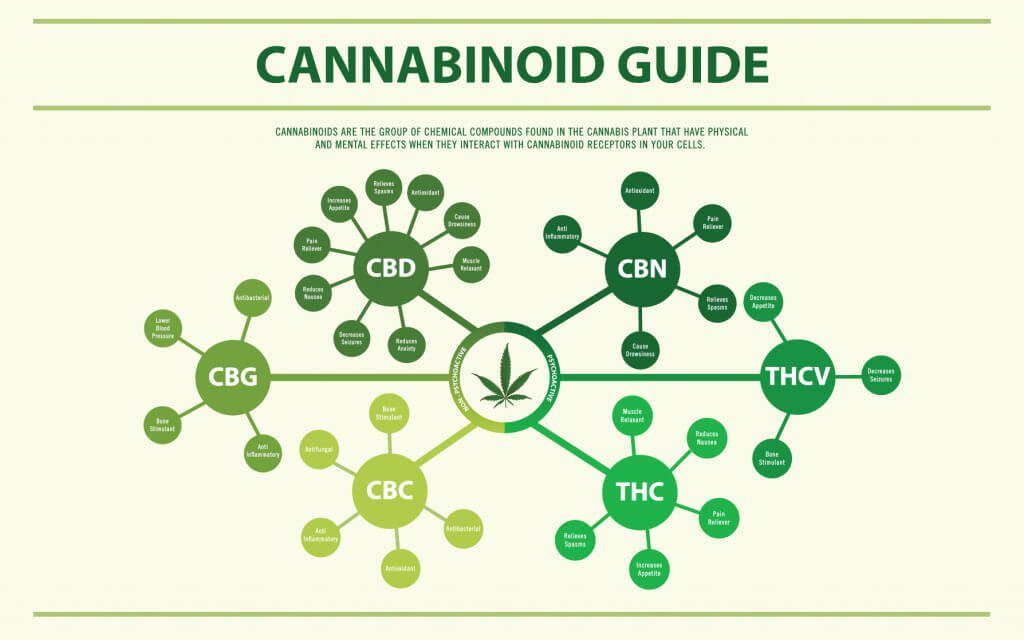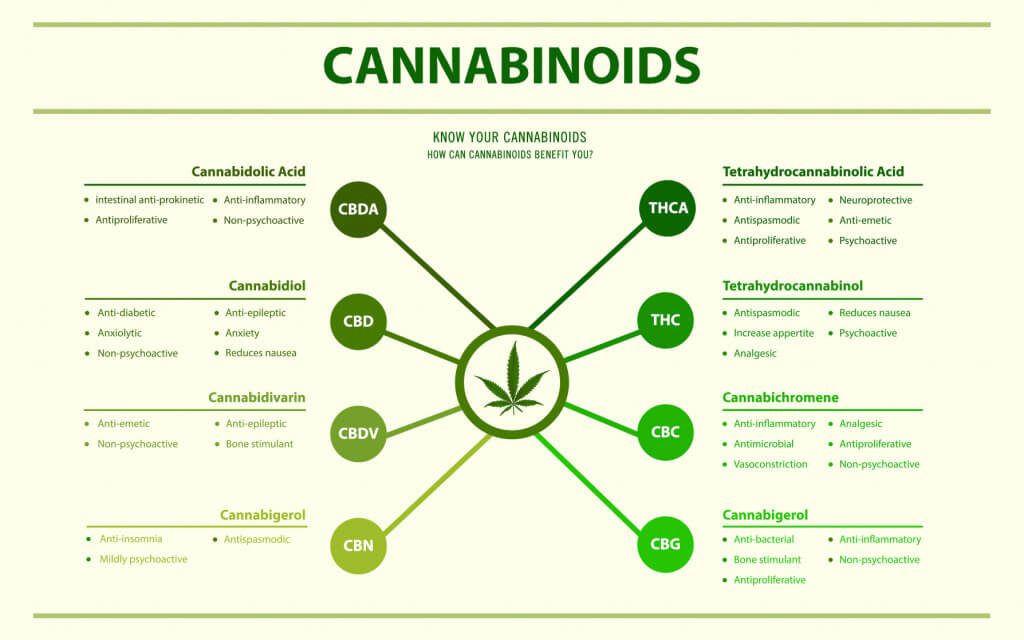With the explosion of cannabis products into the mainstream, the topic of THC vs. CBD couldn’t be hotter.
Although cannabis has hundreds of identified cannabinoid compounds, Tetrahydrocannabinol (THC) and Cannabidiol (CBD) are present in the highest concentrations. They account for the bulk of beneficial physiologic properties attributed to cannabis plants.
These two compounds have significant differences for users. So having the correct information about THC vs. CBD and what they do is crucial to becoming an informed patient and making healthier decisions.
The most striking difference when it comes to THC vs. CBD is the psychoactive effects.
THC administration results in an unmistakable euphoric “high,” whereas CBD does not have overt psychoactive properties. For this reason, some users might seek out one or the other at a particular time or setting. Sometimes users may seek out the combination of effects that CBD and THC can provide.
CBD has a marked effect on peripheral nerves and produces a more substantial body relaxation due to its soothing anti-inflammatory properties. For example, long-haul truck drivers might not want to risk using THC for legal and safety reasons but still might desire the beneficial effects of cannabinoids. In this case, CBD would be a more logical choice.
Research has shown that the highest-yield medicinal cannabis strains contain a balance of THC and CBD. The decision on whether to use THC or CBD primarily depends on the patient’s comfort level with feeling the euphoric “high” associated with THC administration.

Simply put, cannabinoids are compounds that interact with the endocannabinoid system. The cannabinoids synthesized by the body are called endocannabinoids. The two best examples of endocannabinoids are Anandamide and 2-Acylglycerol, or 2-AG for short.
These compounds are made in the body and have similar structures to cannabinoids made in plants. The cannabinoids in plants are called phytocannabinoids. These phytocannabinoids bind to the same receptors in the body as our endocannabinoids and are affected by the same enzymes.
Plant-based cannabinoids act upon the body’s natural endocannabinoid system (which we will delve into as a recurring theme in future blog articles). In short, this system is present in humans and other mammals. It has evolved over thousands of years to restore homeostasis, or natural balance, to our physiologic systems when we encounter stimuli that perturb our natural harmony.
The endocannabinoid system is a collective of hormones, receptors, and enzymes with active sites all over the body. Some sites include the brain, digestive system, immune cells, reproductive systems, sensory pain nerves, emotional centers, sleep and wakefulness sites, and memory.
With such far-reaching functions, it is clear why people are so interested in cannabis products making a resurgence as medicine. Given that these chemicals can be separated, some users may seek CBD in combination with THC.
Cannabinoids are fat-soluble substances that interact with the receptors of the cannabinoid system. It is only after binding to their specific receptor that cannabinoid compounds exert their effects. Once attached to their cannabinoid receptors, the CB1 and CB2 receptors, a cascade of reactions follows within the target cell.
The result? The release of neurotransmitters or hormones that further medicate and amplify the effects of cannabinoids.

At first glance, Tetrahydrocannabinol and Cannabidiol seem almost identical. They share a familiar chemical formula and have an equivalent molecular weight. Looking at their chemical structure, they look practically identical to the untrained non-chemist.
But upon closer examination of the THC compound, you’ll notice a cyclic structure with an oxygen atom sandwiched between two carbon atoms in what is called an Ether bond. This bond enables THC to sit comfortably in its receptor, like a lock and key, and exert its effects.
On the other hand, Cannabidiol has opened up that ring structure. Look closely, and you’ll notice a hydroxyl group (-OH) at the end where the oxygen was formerly bound on each side by carbon atoms.
Now the structure has two -OH groups and is therefore called a -Diol. Since it is a “diol,” this structure cannot sit comfortably in the same receptor as THC because of its nonpermissive shape. When CBD comes into contact with the CB1 receptor, it restricts the binding of THC to the active site of its receptor. This modulation of THC’s activity by CBD receptor binding is called Allosteric inhibition.
At the time of this writing, products containing more than 0.3% THC are still considered illegal at the federal level in the United States. CBD-based products with less than 0.3% THC are not psychoactive. Therefore, they are legal for consumption in most U.S. states and do not require a Medical Marijuana certification. An example would be a CBD tincture containing 0.3% THC.
These products are legal due to the minimal level of THC within them. On the other hand, in states that have a medical marijuana program, patients can still obtain medical marijuana with an appropriate physician certification and licensure by that state despite marijuana’s status as a federally illegal drug.
If patients abide by the rules of their respective state’s medical marijuana program, they will not be subject to criminal prosecution by local and state authorities. The Rohrabacher-Farr Amendment of 2014 prohibits the Justice Department from spending funds to interfere with the implementation of state medical cannabis laws.
Patients taking THC-containing products should be advised that use will likely result in a positive test on most employment-based drug screens. Most drug tests will not show positive for CBD-based products below the 0.3% threshold. However, certain high-sensitivity tests might show positive results. This can be the case with full-spectrum CBD tinctures.
Pure CBD isolates contain no THC, but CBD products labeled as “Full Spectrum” include the complete entourage of cannabinoids. As a result, it is possible to test positive for THC despite the product not having psychoactive effects. For the most part, however, users can rest assured that products marketed as CBD below 0.3% THC will not test positive for THC.
When you break it all down, CBD and THC are two pieces of the same puzzle. Each has benefits apart from the others, but they work best when combined.
Depending on the effect or benefit you’re trying to achieve, and how comfortable you are with the psychoactive effects of THC, CBD alone may do the trick. For maximum efficacy, though, you don’t have to settle for just THC or CBD. They always work best in tandem.